
Saucer, China, ca. 1790–1820. Porcelain. D. 5 3/4". (George L. Miller collection; photo, Robert Hunter.) The break can be seen in the lower right section of the plate.
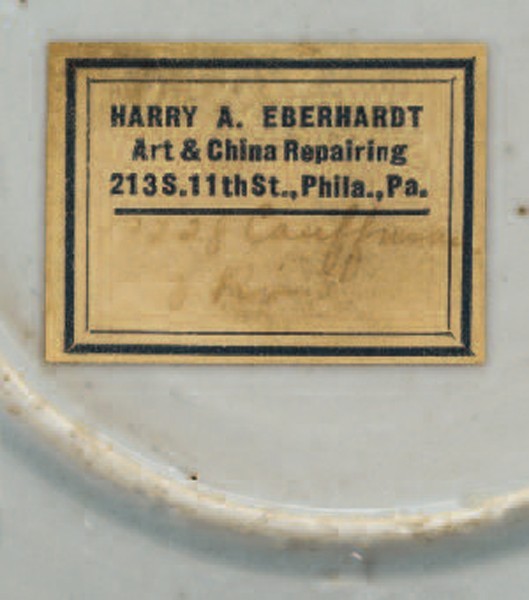
The label on the back of the Chinese porcelain saucer illustrated in fig. 1.
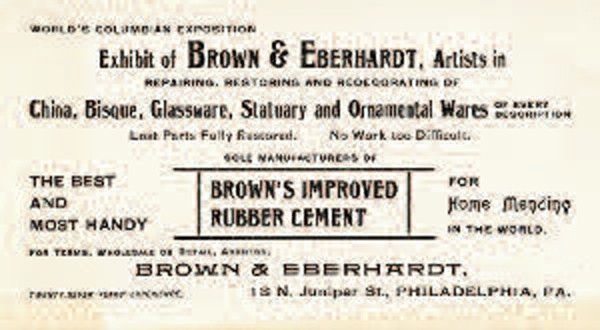
Trade card, Brown & Eberhardt, Philadelphia, ca. 1892. (Joseph Downs Collection of Manuscripts and Printed Ephemera, Collection 46, Winterthur Library.)
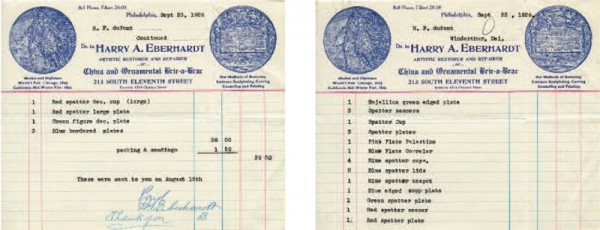
Invoices, Harry A. Eberhardt, Philadelphia, September 23, 1926. (Winterthur Archives, Winterthur Library.)
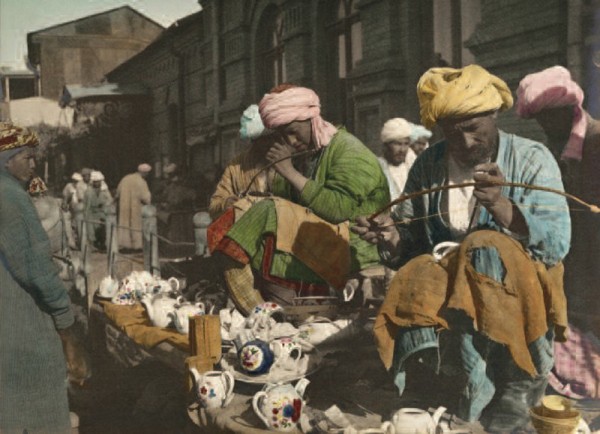
Workers repair broken china dishes with copper rivets, Samarkand, Uzbekistan, twentieth century. (photo, Maynard Owen Williams; National Geographic Stock: Vintage Collection / Granger, NYC—All rights reserved.)
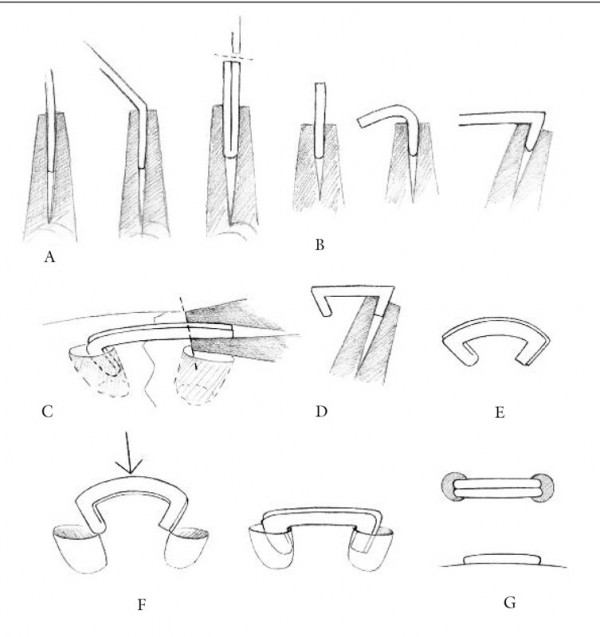
Illustration of riveting process described by William R. Eberhardt and based on images found in Claudia S. M. Parsons and Frederick H. Curl, China Mending and Restoration (London: Faber and Faber, 1963), pp. 49, 52, 55. The illustration shows how: (A) the wire is bent double; (B) the first rivet leg is bent and hammered into position; (C) the second leg is measured; and (D) the second leg is formed. The remaining images show: (E) the completed rivet with a bowed shape; (F) the rivet in position at the holes; and (G) the final appearance of the rivet when viewed from the top and side.
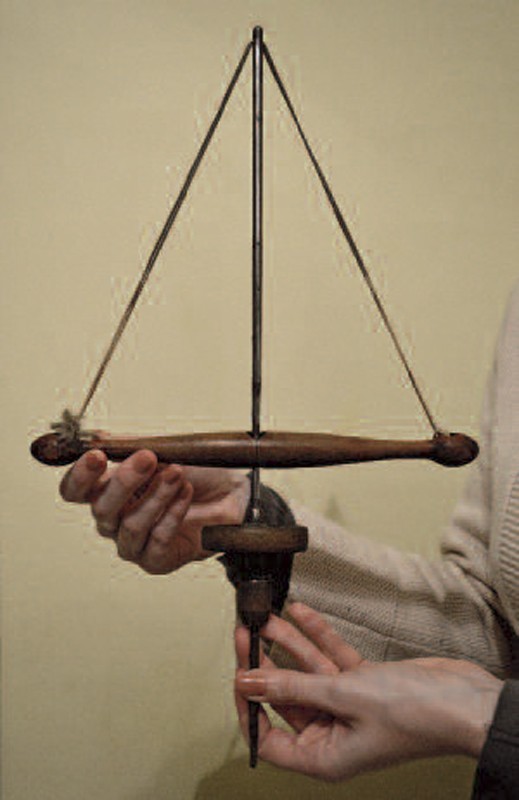
Drill stock with solid metal flywheel. (Photo, William David Brown.)

Emily Brown holding the wooden crossbar wound in position around spindle to begin drilling movement. (Photo, William David Brown.)
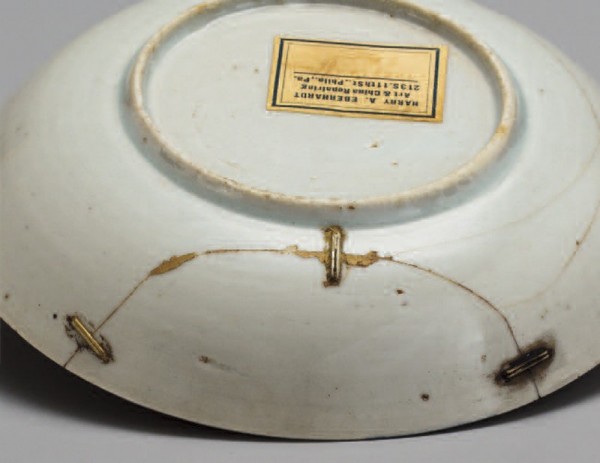
Detail showing the rivets in the saucer illustrated in fig. 1. (Photo, Robert Hunter.)
